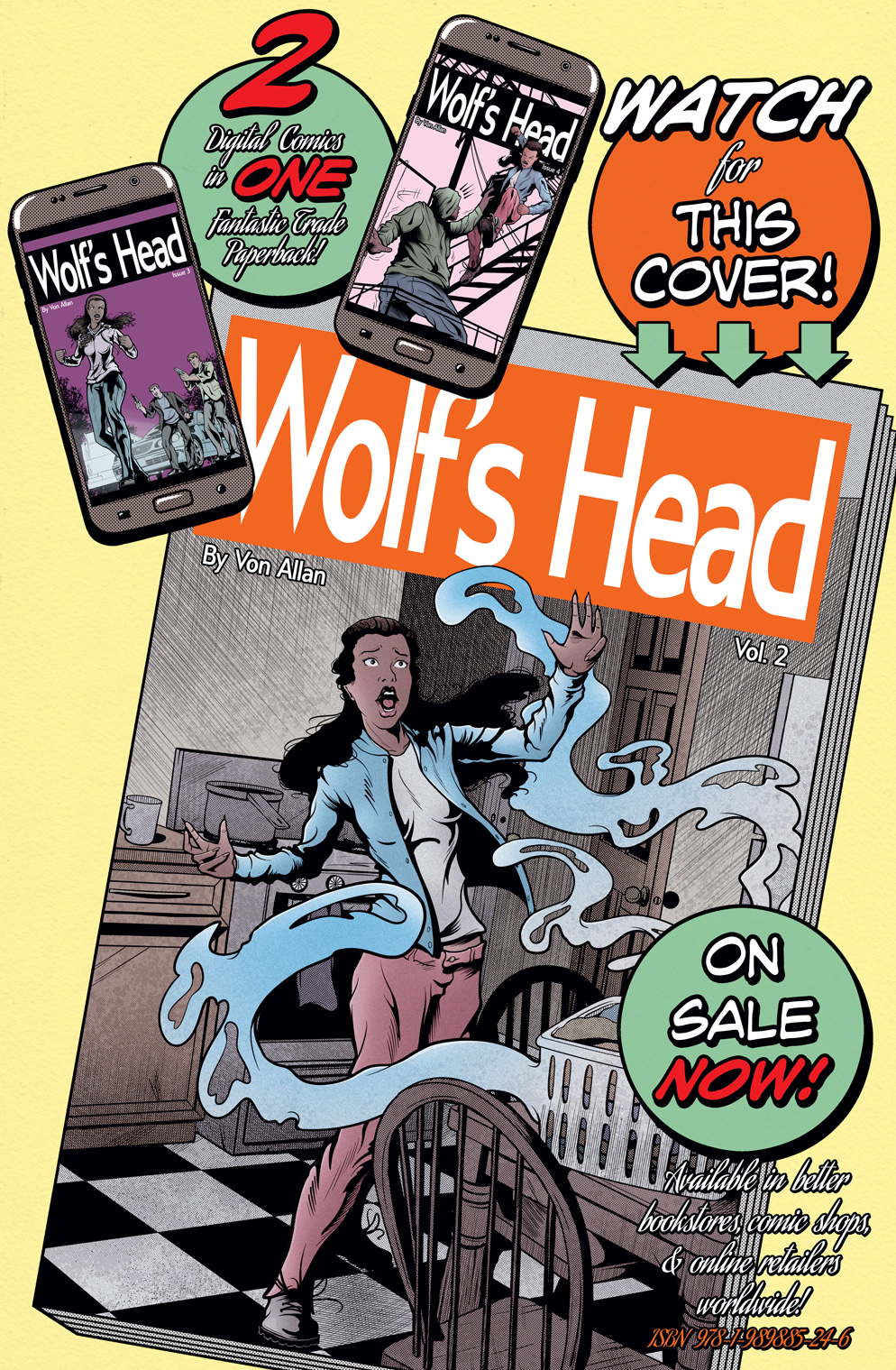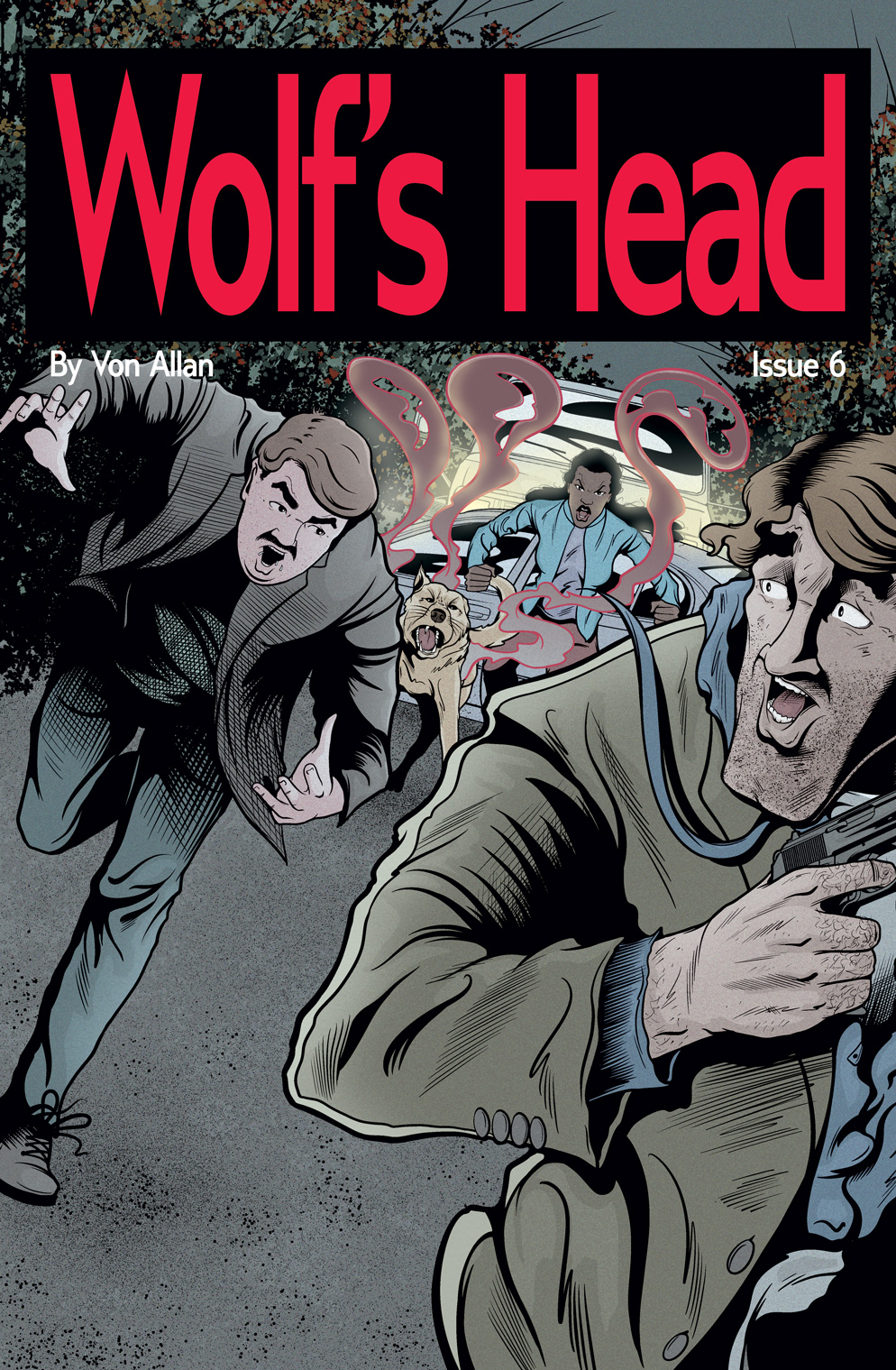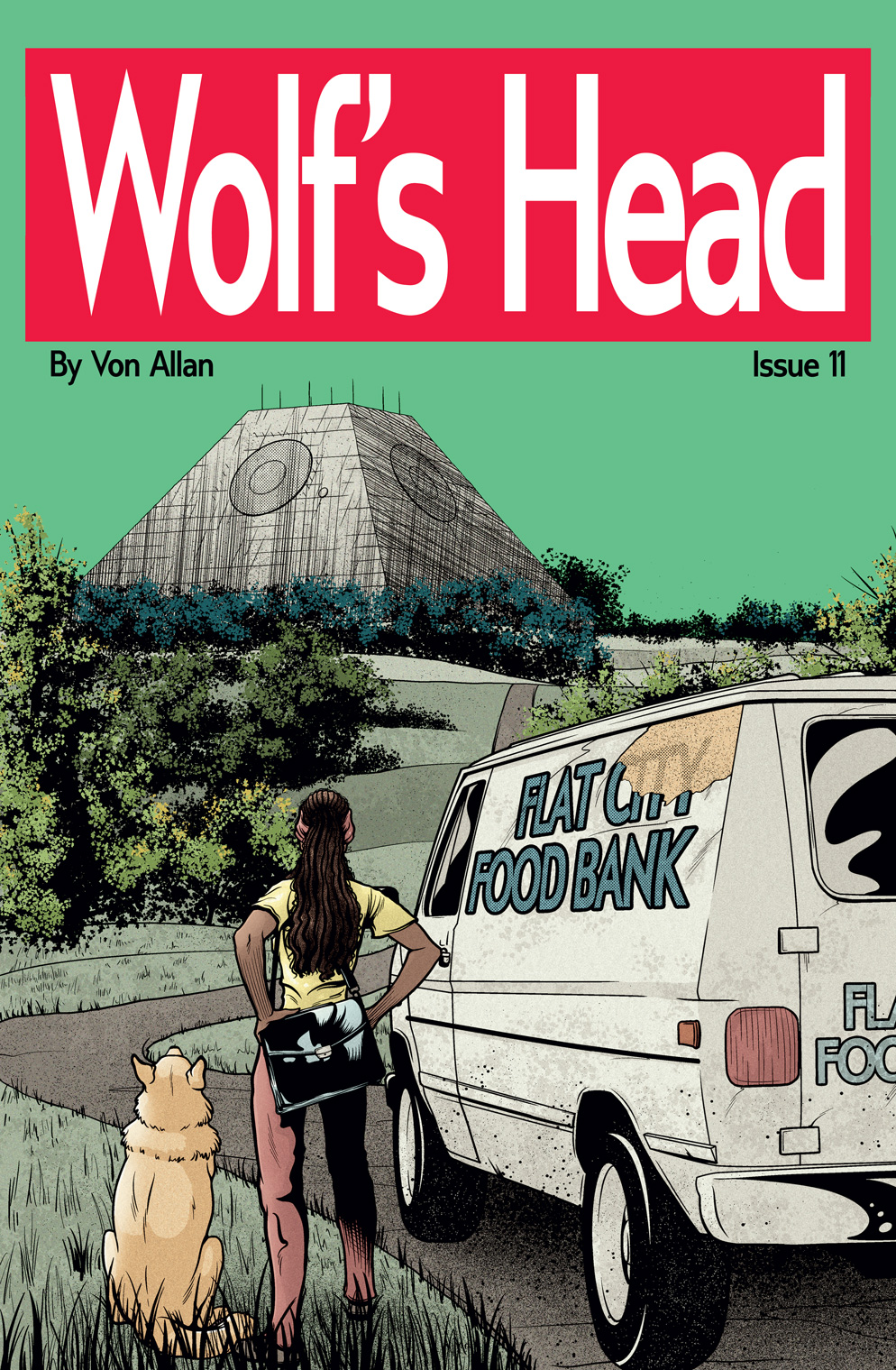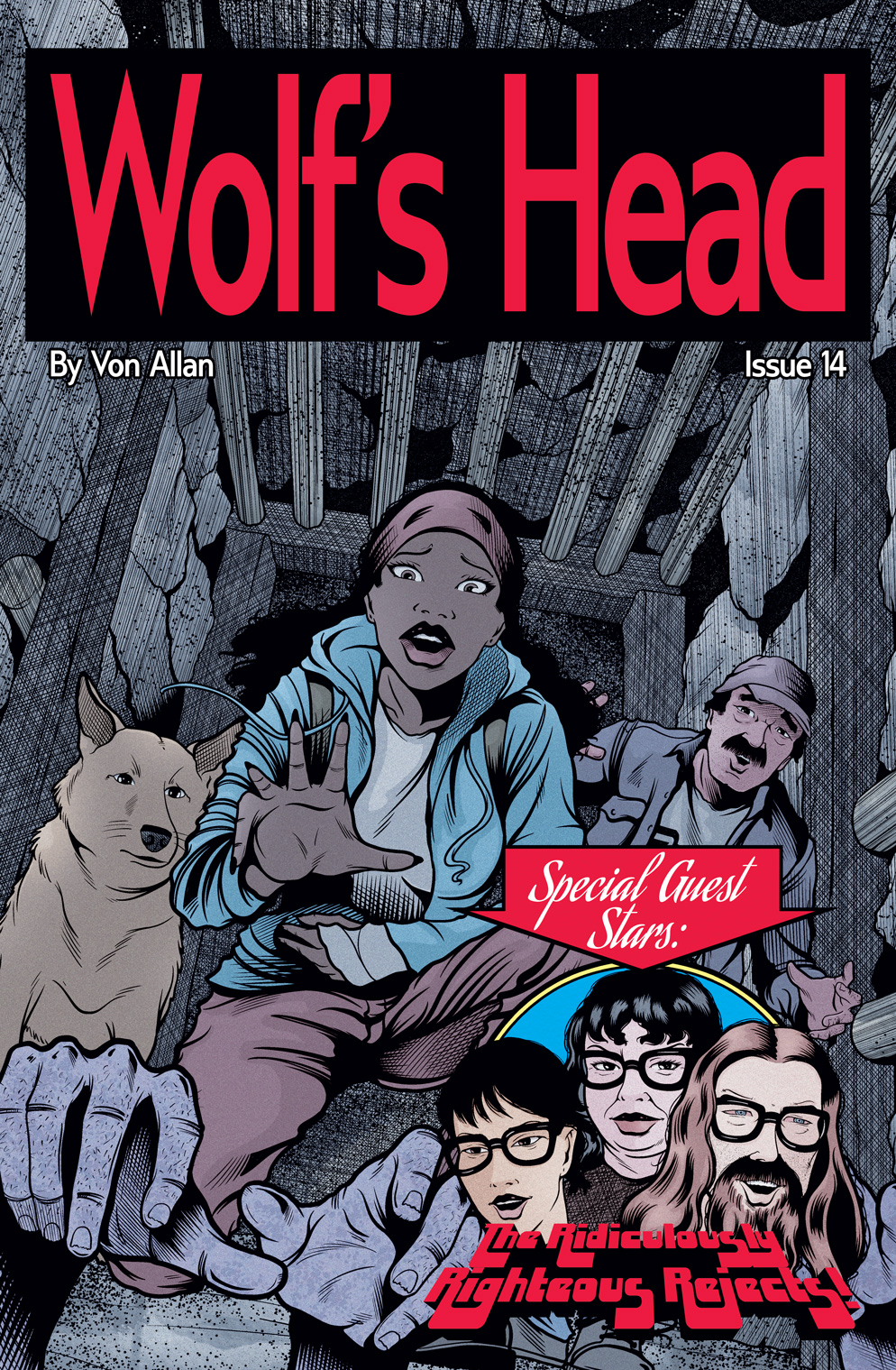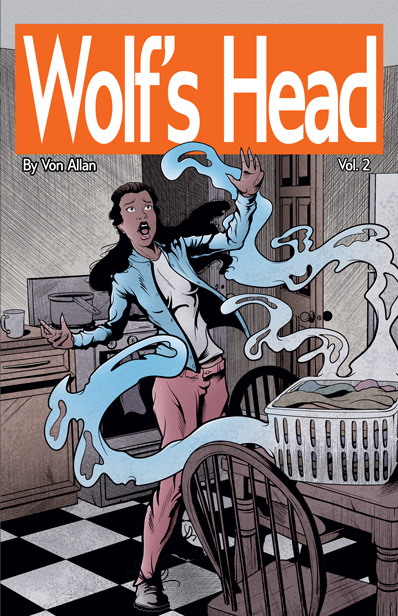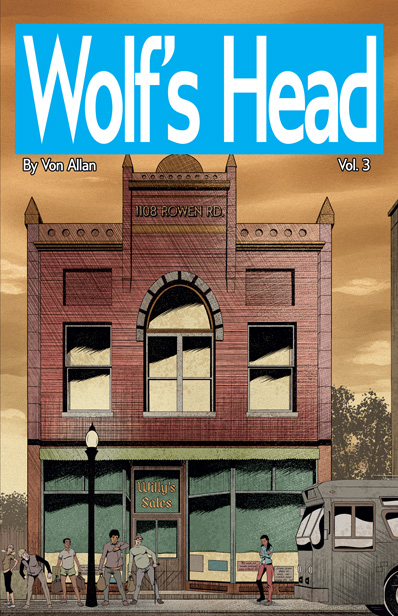Read WOLF'S HEAD issue 3 of the comic book series for free on the Internet Archive
Elevator Pitch
“Lauren Greene and her mother, Patty, have a huge disagreement over the future of a self-aware Artificial Intelligence (AI) that her mom saved from a lab and sheltered from its war-mongering creators. Angry at her mother’s stubbornness and terrified of the world they’re suddenly involved in, Lauren storms out… only to be kidnapped by Jeremy Hamilton, the powerful man who invented the AI.”Characters and Goals
One of the things I love about comics is when you have well-established characters with different goals coming into conflict. To do that properly requires setting up each character so that they are as real as possible. When you know where a character is coming from — what they want and why — then it becomes a great deal of fun to put those goals into conflict with one another.Conflict, from a writing point of view, is not Character A punching Character B. Conflict results from when a character can’t get what they want (or need). I think my favourite definition is by Keith Wilson in his book BODY TRAUMA: “Conflict is the core of all fiction. Without conflict there is no story. When obstacles prevent a character from obtaining his or her goals, there is conflict. It is also necessary that the consequences of not attaining the goal be profoundly significant for the character.” There’s no right way of doing this, but it obviously has to be crystal clear to the reader. If not, then the reader simply won’t understand the “whys” of the character’s actions.
An obstacle can be internal or external to the character. Here’s a simple example: a sixteen year old wants to get their driver’s licence. That’s their goal. An external obstacle could be a lack of money; they just can’t afford to pay for the licence and the driving school to learn. See? Simple but clear conflict. Then it becomes a matter of going through what the character does to get that money. Do they make good or bad decisions? What are the consequences of it? How do they act to overcome those consequences?
An internal obstacle is something intrinsic to the character. In the case of our young driver, an internal obstacle could be fear. They’re scared of driving. Maybe they were involved in an accident as a little kid? Regardless, they are scared and since that prevents them from accomplishing their goal, there’s conflict.
These obstacles can even work in conjunction with one another. Our teen wants to drive, but doesn’t have the money (external) and is terrified (internal). If we throw on another external obstacle (maybe they were offered a dream job, but it’s too far away and public transit is too poor to get there without a car). Here’s another: what if their mom is scared of them driving, too, and can’t face that their child has grown up? See? Now we have a number of situations where the teen is going to have to go through a lot to deal with the conflict and achieve their goals. So, with Lauren and her mom Patty, that’s what we have. Both women have goals, but their goals are different from one another. How that resolves is part of the fun of this issue!
Key Links
Here are all of the key links:- Internet Archive link for WOLF’S HEAD Issue 3: https://archive.org/details/wolfs-head-003-by-von-allan
- WOLF’S HEAD Volume 2 (collecting Issues 3 and 4 of the series): https://wolfs-head.vonallan.com/p/wolfs-head-volume-2.html
- Shop Page: https://wolfs-head.vonallan.com/p/shop.html
- Wolf’s Head Official Site: https://wolfs-head.vonallan.com/
WOLF’S HEAD Volume 2 Trade Paperback Graphic Novel
For those who would like to purchase a print copy, issue 3 and issue 4 are collected together in a 60 page trade paperback graphic novel. So while you can always read the series for free, print-lovers are well-represented, too! You can learn more about the graphic novel at https://wolfs-head.vonallan.com/p/wolfs-head-volume-2.html.Multiple Ways to Read the Series
Digital Comics
You can read every issue of WOLF'S HEAD for free on the wonderful Internet Archive. You can click on any of the covers below to find that issue on the Internet Archive.
Trade Paperback Graphic Novels
What if you want to hold these comics in your hand? Easy! Trade paperbacks have been published in nine volumes so far. Each volume collects two issues of the digital series and are 60 pages in length. Most volumes also have sketches, background material, editorials, letters, and whatnot, too! These affordable paperbacks are available worldwide.
Most online retailers regularly stock and carry WOLF'S HEAD. However, occassionaly there are hiccups with this from time to time (typically because the retailer has had a little rush on sales!). So, if you were shopping on Amazon (for example) and discovered that a particular volume is out of stock, there are many alternatives. These include Barnes & Noble, Bookshop.org, Indigo, McNally Robinson, The American Book Center, Waterstones, and so on. In addition to these links, all of the ISBNs for the trade paperbacks and the hardcover are also below, so you can always use that when you are chatting with your local bookseller or comic book shop.


